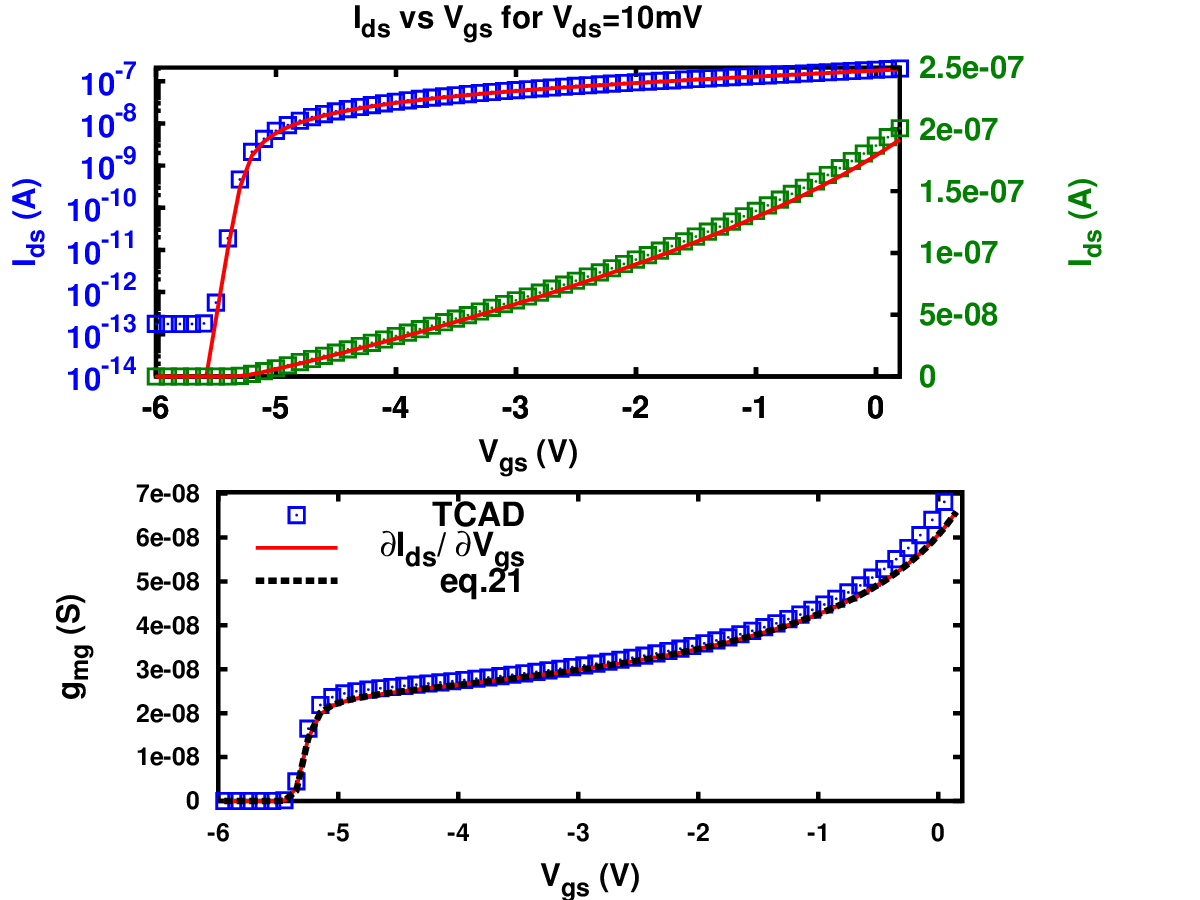Jean-Michel Sallese
Charge-based modeling of field effect transistors, Make it easy
Joint International EUROSOI and EuroSOI-ULIS Workshop (Sept.2020)
DOI: 10.1109/EuroSOI-ULIS53016.2021.956068
EDLab, EPFL, Lausanne (CH)
Abstract: In this presentation, we revisit some charge voltage dependencies for different architectures of field effect transistor, emphasizing on compactness and simplicity while maintaining a close link with physics, which makes these models predictive and accurate for general purposes of compact modeling.
Fig: The gm/I invariant versus the inversion coefficient
IC.
The operation modes of the MOSFET are clearly defined.



